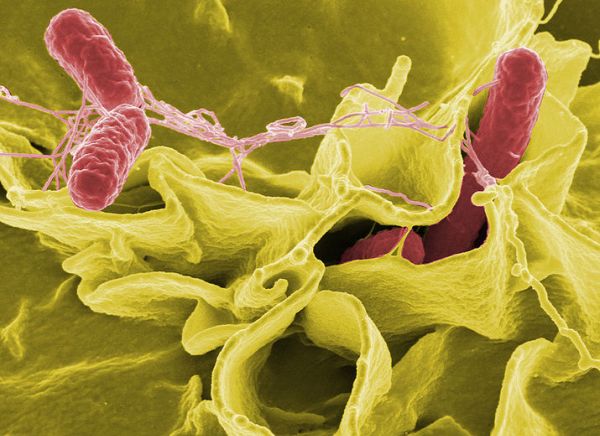
Alternative fuel source is a major topic that is being talked about these days in almost every field. Various renewable sources that include wind, water, sun etc. are being widely used in producing green electrical energy. For increasing energy demand, scientists are developing more facile and cost efficient ways. An attractive and novel alternative for production of clean energy is the development of microbial fuel cells. It is a device that converts chemical energy to electricity.
Let us take a look at the different trends:
1. NRL tests ocean sensor powered by microbial fuel cell

The Naval Research Laboratory (NRL), Thailand, has invented a unique type of hydrogen fuel cell that gives varying buoyancy by making use of bacteria. The device, known as Zero Power Ballast Control, lets an autonomous ocean sensor to move up to the surface or go down the water column very comfortably. There is no need of generating electric power from the microbial metabolism, but the electricity is generated from metabolic microbes by products like hydrogen gas, and there is no need of any other fuel for power. Recently, the system was tested to move a device called bathythermograph sensor, which is used to check the changes in temperature and pressure at different water levels. There are two chambers in the cylindrical sensor, in which the upper section contain all electric valves etc. The lower chamber consist of the bacteria that produces abundant hydrogen during their growth. A very low power timer, that used around 1 to 10 milli watts of power was utilized for programming the sensor making the cylinder to drift to the surface and dive on demand. The timer was powered by the by product i.e. hydrogen gas of the bacteria and according to the Naval Research Lab news release, ‘the experiment was successful’. The sensor could be used in a variety of military and Civilian Ocean monitoring experiments as well as in meteorology and mine detection.
2. U.S. Navy eyes microbial fuel cell powered by mud feasting bacteria

The U.S. Office of Naval Research, in collaboration with researchers at the University of Massachusetts, is trying to design a battery that runs on electricity generated by ‘Geobacter’. The geobacter is a microbe, which is about 3 to 5 nano meters in diameter, known for converting the nutrients from waste water and mud into electric power. The researchers have now come up with a strain of the organism that is eight times more efficient. Until now the navy has been deploying tiny and light weight microbial fuel cells to power sensors, but now they are planning to use geobacter fuel cells to power small robotic watercraft.
3. Bacteria powers the world’s smallest fuel cell

Assistant Professor, Civil and Environmental Engineering, Kelvin B. Gregory and his colleague Philip R. LeDuc of Carnegie Mellon University have developed the world’s smallest fuel cell that gets its power from bacteria. These tiny fuel cells could be used in remote areas where batteries fail to work, like geological environments or deep oceans. The energy will be produced from the metabolic activity of bacteria on sleek gold sheet which is then maneuvered through micro manufactured channels. The bacteria creates a biofilm by making use of a natural organic compound, to generate power. Conventional batteries that are used in micro electric devices could be replaced with better and more efficient versions of the small bacteria powered fuel cell.
The benefits:
Microbial Fuel Cells (MFCs) are the best alternative to fossil fuels as they have a pretty high efficiency. These cells make use of microbes that are very easily available. These cells do not tend to cause any pollution and is also safe to use as compared to the hydrogen fuel cell systems. As these microorganisms are easily accessible, they are less costly than other fuel cells. The MFC’s when used in waste water treatment plant, not only remove the waste water but also generate usable energy by consuming the waste material. Because of their small size and light weight, these fuel cells can be used in tiny devices like micro sensors, pacemakers etc.
The lowdowns:
As we know, the microbes need a specific environment for their survival. While some need very high temperatures, others require less heat. These species might not be able to survive in different surroundings, and this might be the biggest disadvantage of MFCs. Secondly, the microorganism might also produce certain toxic by products that may harm in an adverse way when an MFC is put into use. Moreover, the amount of electricity that is generated by the microbial fuel cell is not sufficient to run the heavy machinery.
The impact:
The MFCs are very efficient compared to conventional fuel cells and this is one of the main reasons of using them in successful future products. Presently, many researchers are working on the MFCs to enhance their efficiency and eliminate the lowdown before they are economically feasible to be used as an energy source. With optimization of these fuel cells, for being exercised in various fields, a large amount of waste could be used to produce usable clean energy rather heaping the landfills and polluting the environment. Once developed in a full working stage, they will be a step ahead of other alternative energy sources.




